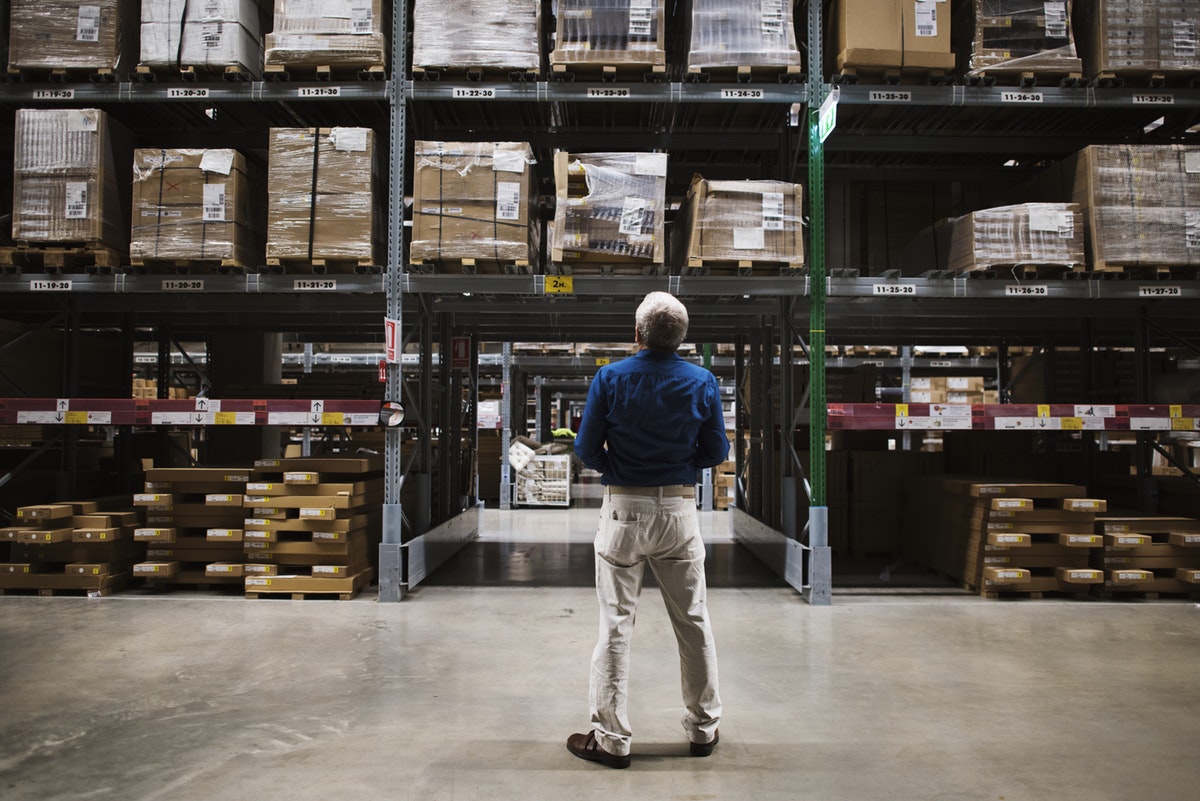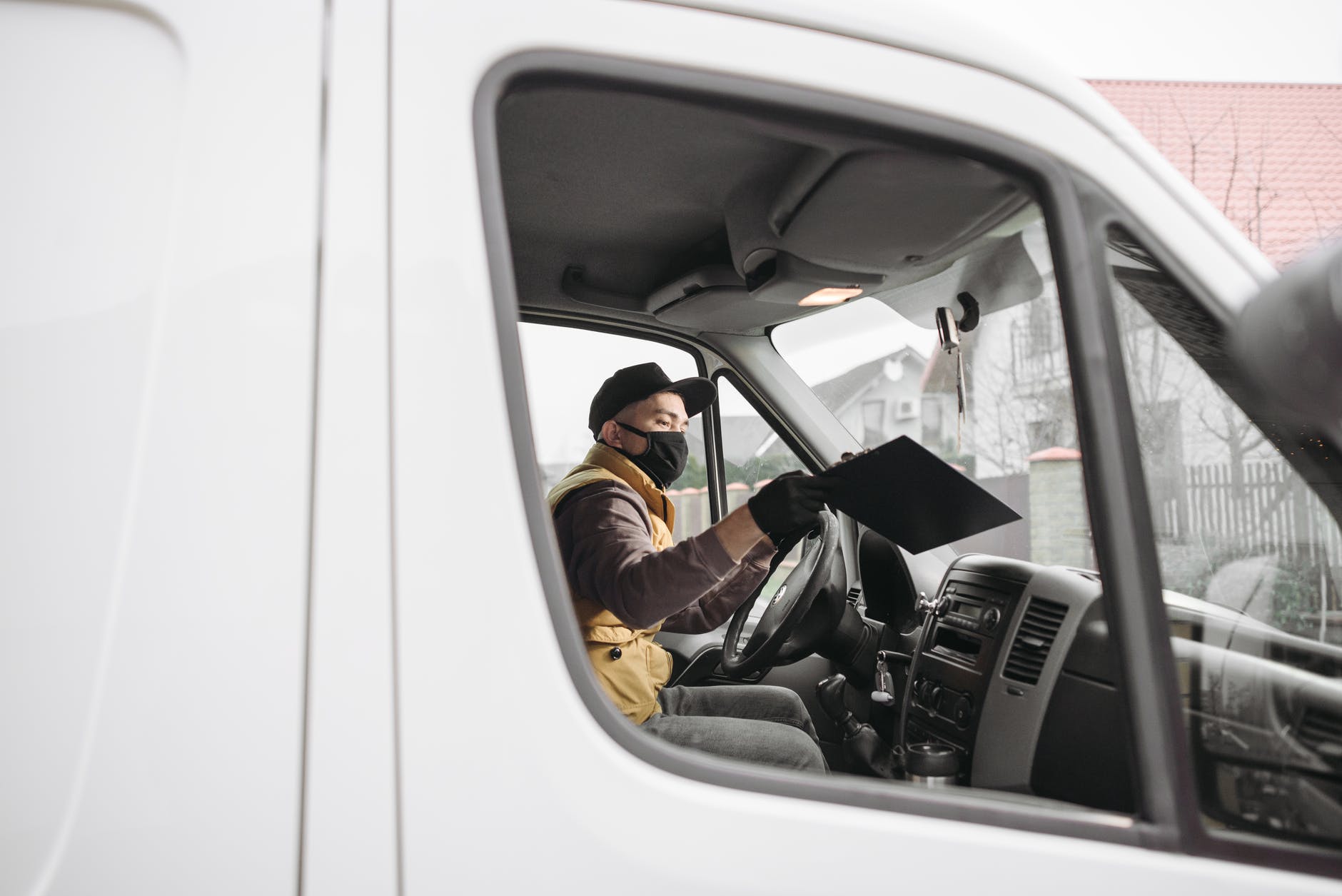BLOG
Health and safety in logistics | 5 areas of focus for 2021

The logistics industry vitally ensures the storage and delivery of goods around the country. It involves not only haulage and distribution but warehousing as well. However, the hazardous nature of its operations means that the industry has a high accident rate. This is partly due to the size and weight of some of the loads involved and the vehicles and equipment required to transport them.
In 2019/20, the Health and Safety Executive (HSE) reported the following transportation and storage sector incident figures:
- 52,000 workers suffering from work-related ill health: musculoskeletal disorders (43%), stress, depression or anxiety (31%) and other illness (26%).
- 11 fatal injuries to workers – broadly similar to the five-year average of 14 fatalities per year – of which 35% were due to being struck by a moving vehicle, 22% resulted from a fall from height, and 13% involved being struck by a moving/falling object.
- 28,000 non-fatal injuries: slip, trip or fall (32%), lifting/carrying (24%) and being struck by a moving/falling object (11%).
The national lockdowns have seen online retail shopping and delivery boom, which has boosted logistics and warehouse operations. However, with heightened demand comes heightened responsibility – employers have both a legal and moral duty to ensure the health and safety of their employees and others.
Hauliers, warehouses and storage facilities are under immense pressure to meet increased consumer demand while at the same time maintaining a safe working environment. Indeed, the HSE’s “spot check” inspection campaign is currently focused on logistics and transport businesses, checking whether goods are being safely stored and despatched.
With the HSE on the warpath, consider reviewing the following areas:
Your safety management system
Given the potential for spot checks, now is the time to make sure you have a robust safety management system and can demonstrate compliance.
Do your current arrangements comply with your legal obligations? Have you reviewed your policies and risk assessments recently? It’s essential that thorough, pro-active risk assessments are undertaken and regularly reviewed. Make sure all relevant risks are covered and that a suitable person is assigned to each issue.
HSE inspectors will want to know how you allocate certain tasks and jobs to individuals and oversee that they are being met. Do people understand their responsibilities? Do you have visibility over the safety performance of different sites? Are vehicle checks and other statutory checks up to date? In essence, can you demonstrate compliance with the regulatory requirements and guidance if inspected?
Demonstrating compliance will improve the defensibility of any claim. Last year, Amazon found itself accused of “failing to provide a safe working environment” after a series of serious incidents were reported to have taken place at its UK storage facilities.
One way to guarantee compliance is by conducting a health and safety audit. While an audit can be produced internally or externally, the auditor should be independent of the part of the organisation being audited. Whichever approach is taken, it must be led by a “competent person”.
How we can help
If you’re not fully confident that you have everything covered, our Health & Safety specialists can take a systematic look at your workplace and current arrangements, identify any areas where you fall short, and get you to where you need to be.
And, if you’re looking for a simple way to stay on top of compliance on a daily basis, our market-leading software, MyH&S, allows you to see the risk status of multiple sites in real time, lets you assign responsibility for tasks, and provides paperless evidence of compliance.
Training
Employers have a legal responsibility to provide staff with the necessary information, instruction, training and supervision relating to their role. When was the last time you revisited staff training needs? Is it time for a refresher? Has the increased consumer demand seen you take on more workers, and have they all had the requisite training to do their role safely?
It’s vital that all new staff receive training and existing staff are kept up to date with evolving safety culture and procedures. Increased warehouse health and safety knowledge will bring about greater observance of best safety practices.
One unprecedented challenge right now is COVID-19. Can your workplace operate within the social distancing two-metre plus rule? If not, it may be reduced to one, but you are obligated to provide training on the new procedures to operate within one metre.
How we can help
If you struggle to find time for training, our remote e-Learning courses are a convenient solution. With e-Learning, workers can complete courses in their own time, at their own pace, allowing you to continue to meet your responsibilities with minimal disruption during this hectic period.
Courses include Accident Reporting (RIDDOR), Manual Handling, Safe Movement of Vehicles, Lift Truck Safety, COVID Response and more.
Visiting client sites
The Health & Safety at Work etc Act 1974 says every employer must take “reasonably practicable” steps to protect the health, safety and welfare “at work” of all their employees. “At work” doesn’t just mean in the workplace – the required protective steps extend to occasions when your employees visit other locations and client sites.
The duty to protect workers both on and off site is more important than ever due to COVID-19. Have you got the right procedures in place and are they working as intended? For example, do your workers perform proper safety checks before and during client visits? If not, you will be falling short of requirements.
Do you need support?
Speak to us for an honest, no obligation chat on:
0345 226 8393 Lines are open 9am – 5pm
Lone working
Similarly, are you protecting lone workers from health and safety risks? Supply chains have been strained by the changing economic lockdown circumstances and the surge in online retail business has increased the numbers employed in logistics and supply chain roles. However, many SME logistics firms will likely have employees, in a variety of roles, working frequently alone or remotely.
What’s more, often awkward shift patterns necessitate workers operating out-of-sight of, or at different times, from colleagues.
Have the risks associated with working unsupervised been carefully assessed? Have you implemented sensible precautions to reduce those risks? We discuss the steps you can take to manage lone working risks here.
How we can help
We can offer practical advice on precautionary measures, ensure you have an effective lone working policy in place, and provide e-Learning training for employees and managers to raise awareness of risks, controls and responsibilities.

‘Basic’ everyday risks
Slips trips and falls, manual handling, load security and safe vehicle movement are part and parcel of good health and safety management in logistics. While COVID-19 remains a clear focus, it’s important that COVID risk management doesn’t detract from all other ever-present and inherent risks present in your environment.
By its very nature, the logistics industry exposes workers to a wide variety of risks: not only accidents on the road and deaths and injuries resulting from unsafe forklift use but also the consequences of poor fire safety, long-term health risks due to poor manual handling techniques, and problems relating to mental health. Thousands of such incidents occur every year.
As an employer, you are legally required to protect the overall health, safety and wellbeing of employees and others, and COVID-19 hasn’t removed other statutory health and safety obligations that normally fall upon you. This means continuing to identify all hazards within your workplace and taking steps to control the risks arising from those hazards.
For example, forklifts are essential to logistics operation but pose a significant threat to workplace safety, accounting for 25% of UK workplace transport injuries. Where staff and machinery operate in close proximity, maintaining situational awareness is critical. Cost permitting, minimise the risk of collision through proximity warning and alert systems, 360° cameras, active RFID tags and other interactive equipment.
Make sure you are managing these basic risks and read our 8 warehouse safety tips.
Need a helping hand?
Time pressures, lack of resources and the temptation to cut corners, especially during busy operating periods, often leads to neglect of proper safety practices. However, breaches can mean a fine of up to £20,000, and for serious breaches that endanger life, fines are unlimited. In the transport and logistics sector, fines have reached £4 million, and in the most serious of cases, employers also face imprisonment. Of course, there’s also the added risk of civil claims and the reputational damage to your business.
Support from Ellis Whittam can help to dramatically reduce risk to your business and your people, give you the confidence in your compliance, and ultimately enhance productivity and efficiency by promoting a positive safety culture. If you would benefit from access to a named Health & Safety specialist, who will work with you to raise standards and keep you on the right track, call 0345 226 8393 or request your free consultation using the button below.
Sign up for the latest news & insights
Resources
Latest News & Insights

Changes to day one unfair dismissal rights | New six-month protection explained
BLOG Written by Patrick Carroll-Fogg on 1 December 2025 Of the almost 75 individual tweaks and changes set to be introduced under the Employment Rights

Breaking down the Budget 2025 for employers
BLOG Written by Daniel Rawcliffe on 27 November 2025 The recently announced UK Budget 2025 is a challenging one for small businesses. While it covers

AI for interviews with job candidates | Balancing technology with a human touch
BLOG Written by Danielle Fargnoli-Read and Tracey Burke on 21 November 2025 AI is reshaping the way UK businesses approach hiring, offering benefits such as

Workplace risks revealed | HSE 2024/25 report shows rising injuries and ill health
BLOG Written on 21 November 2025 Providing a safe, healthy workplace should be a top priority for all employers. But how well are workplaces actually

CQC under scrutiny | Inspection gaps highlight need for compliance readiness
BLOG Written on 12 November 2025 A recent BBC article highlighted that the Care Quality Commission (CQC) failed to routinely inspect a service previously rated

Duty to prevent sexual harassment | Almost half of UK businesses aren’t compliant
BLOG Written on 11 November 2025 Almost a year since the Worker Protection Act 2024 came into force, new research from our team at WorkNest

Unconscious bias in the workplace | Lessons from The Celebrity Traitors
Blog Written by Andrew Moore on 7 November 2025 The Celebrity Traitors has had us all hooked. While we tune in for the twists, betrayals

Best interview techniques for employers | 5 simple strategies for success
BLOG Written by Danielle Fargnoli-Read on 22 October 2025 The interview process hasn’t changed much in decades – and candidates can tell. Recycled questions, rigid

What happens if an employee resigns during the disciplinary process?
Bridging the growing gap between employers and today’s job seekers.
